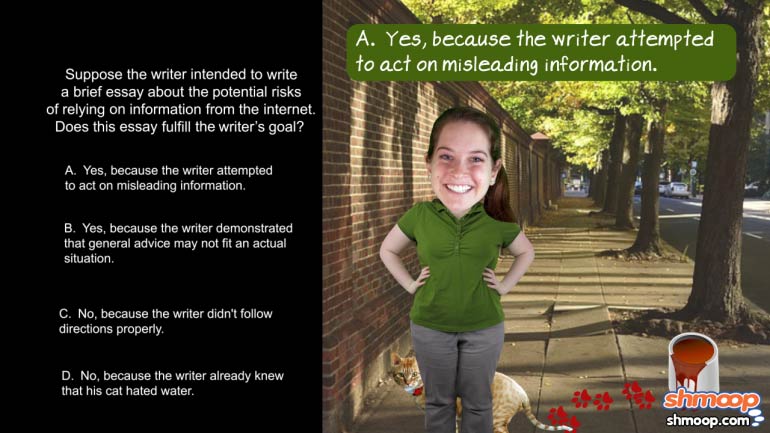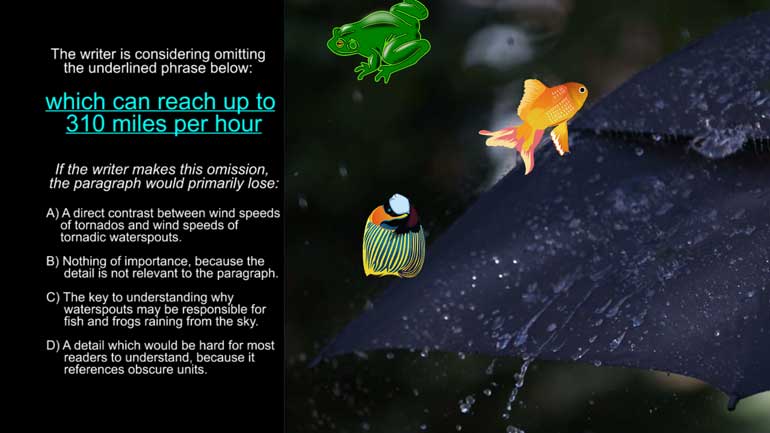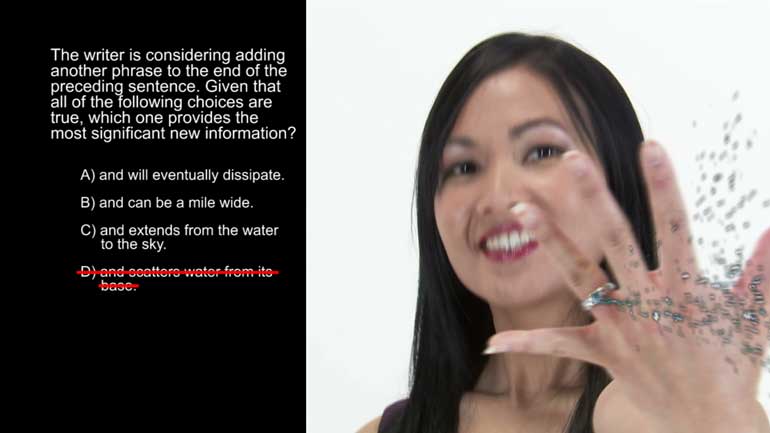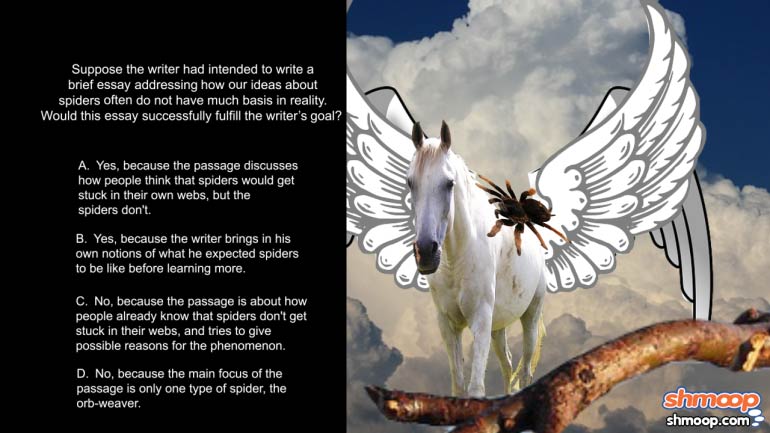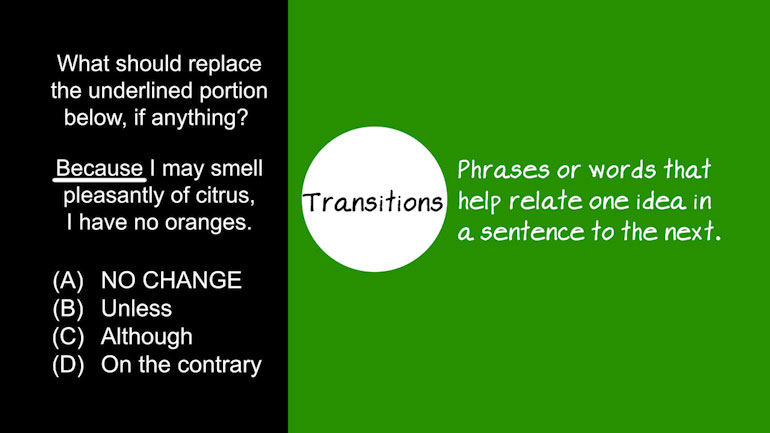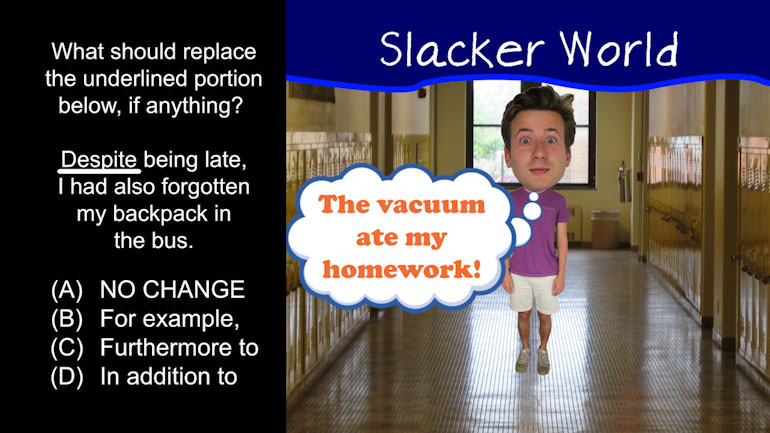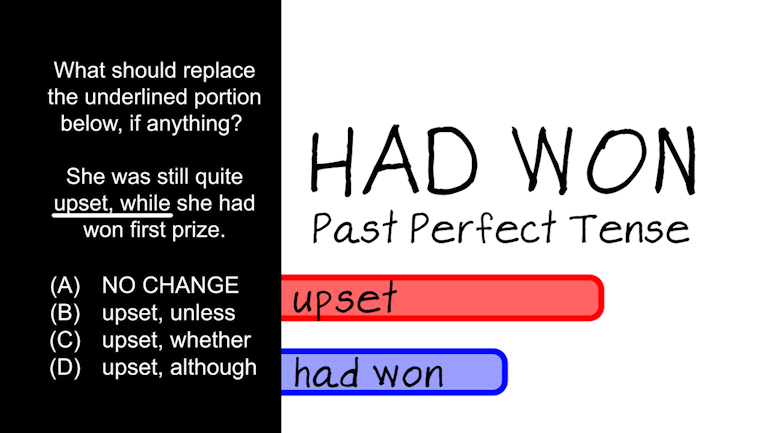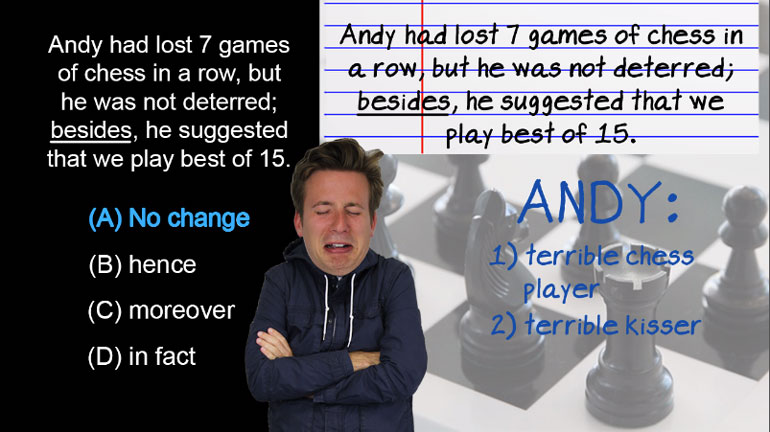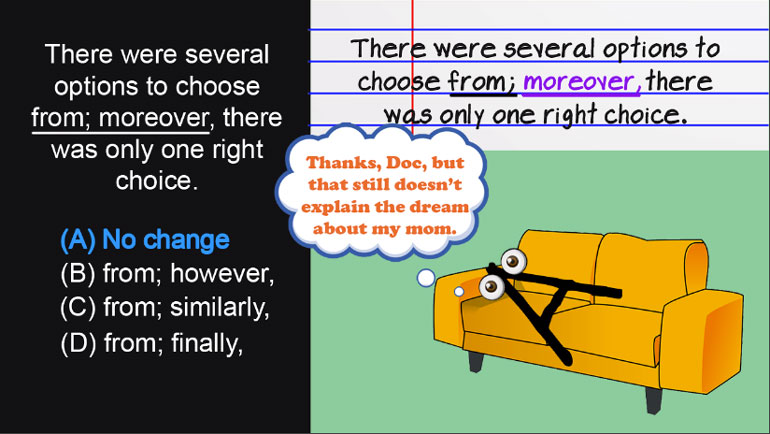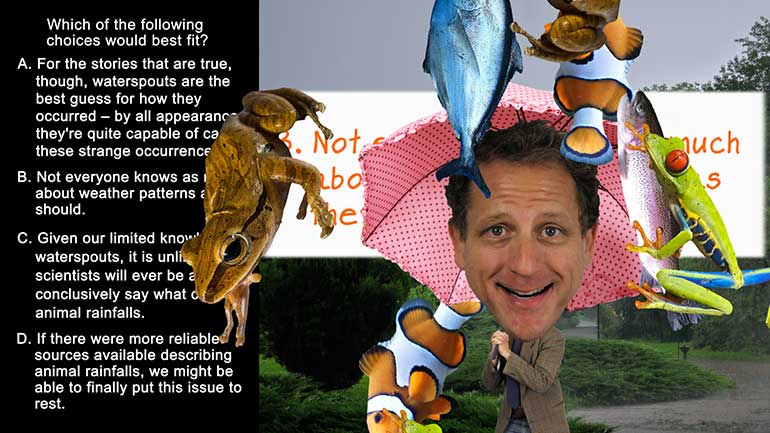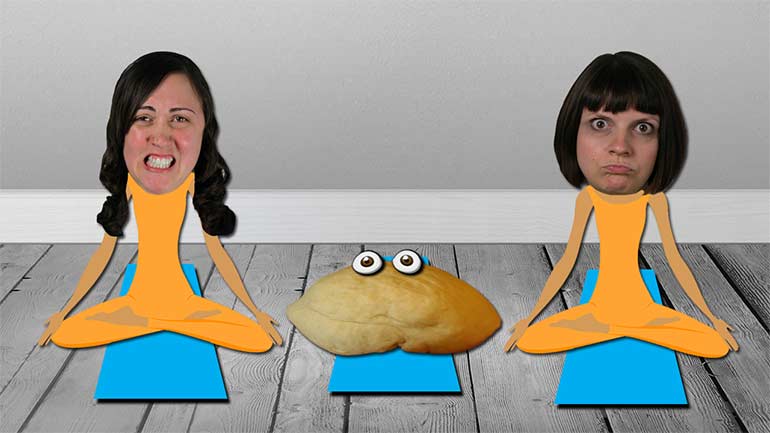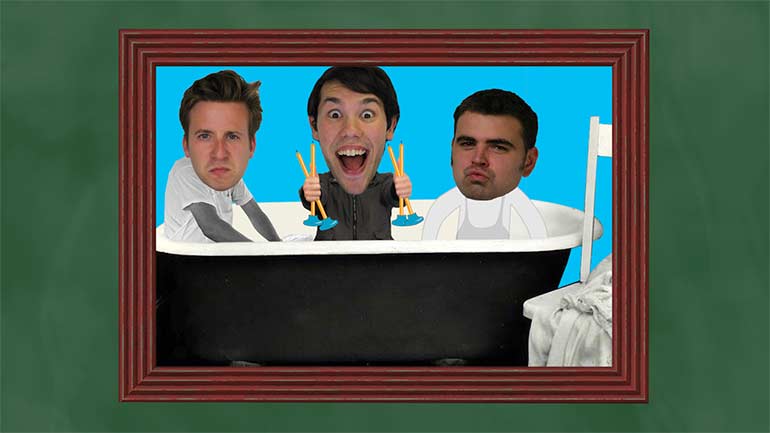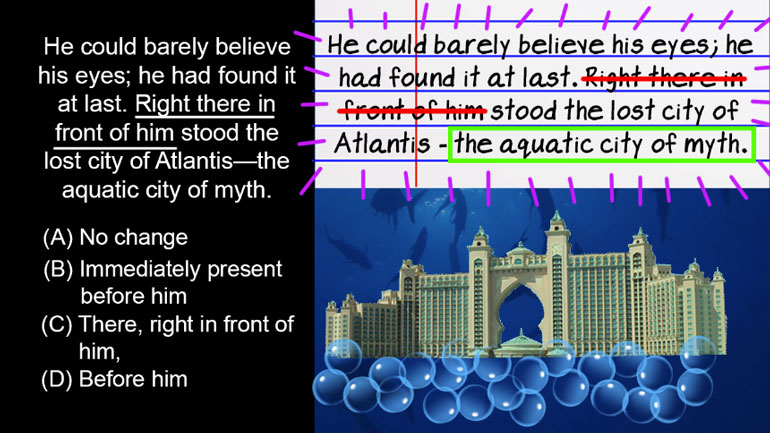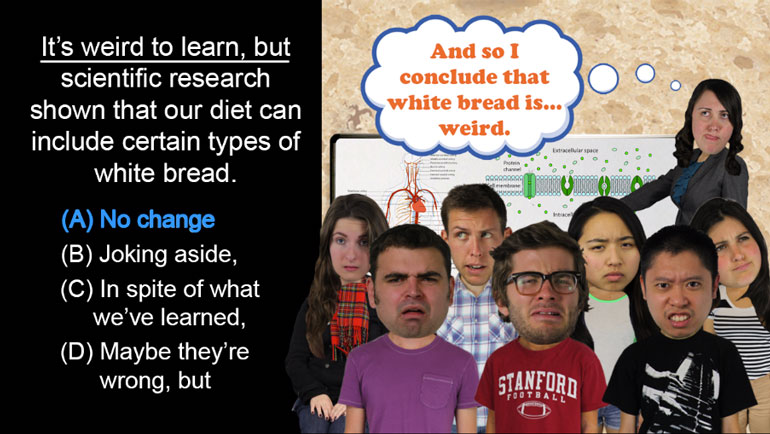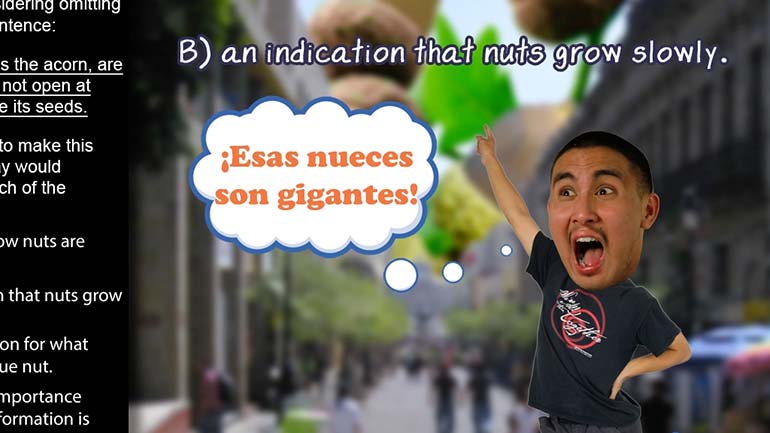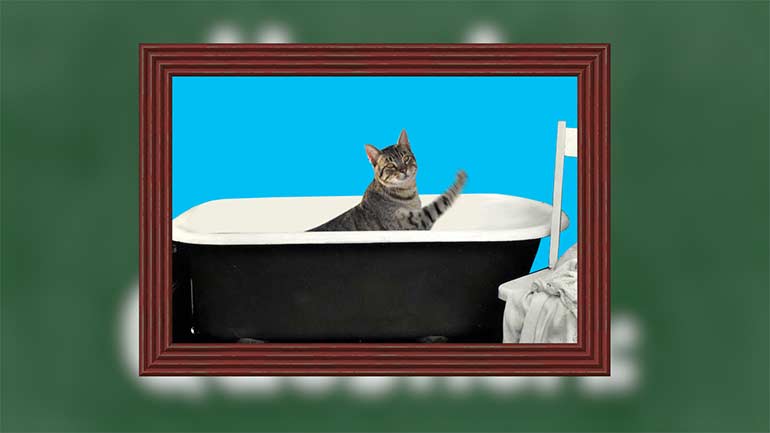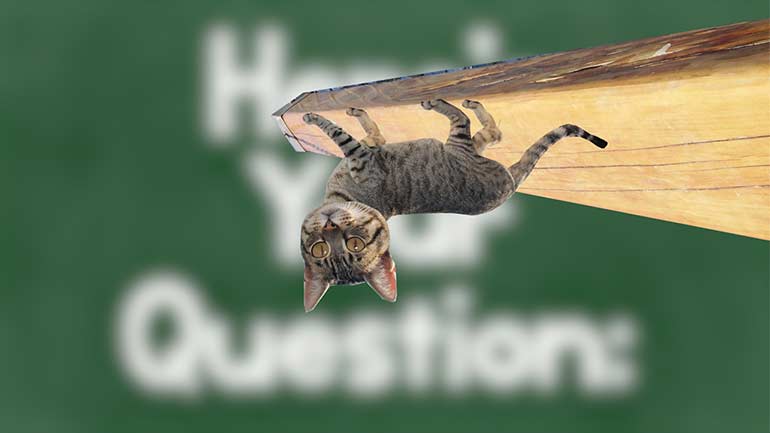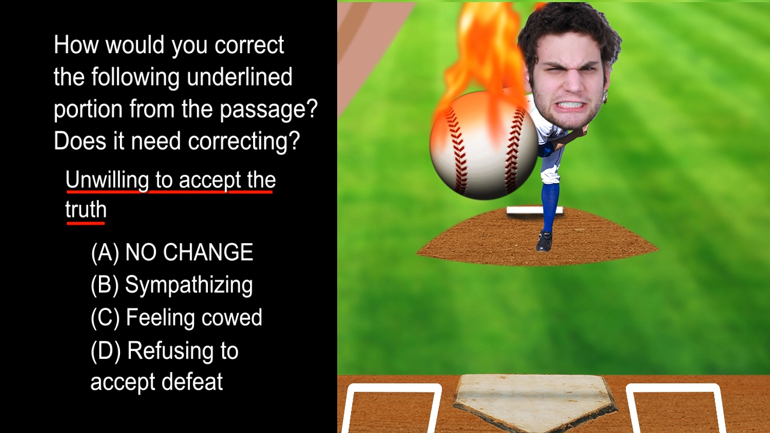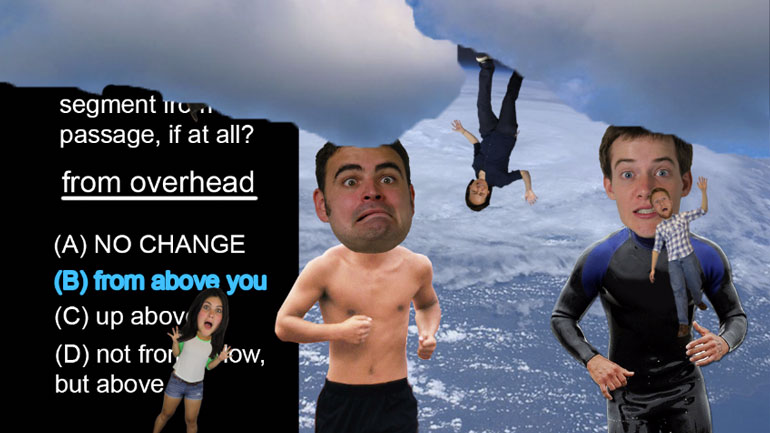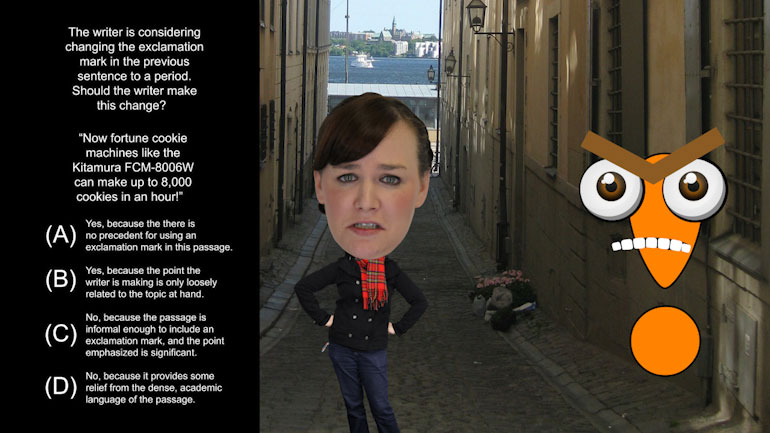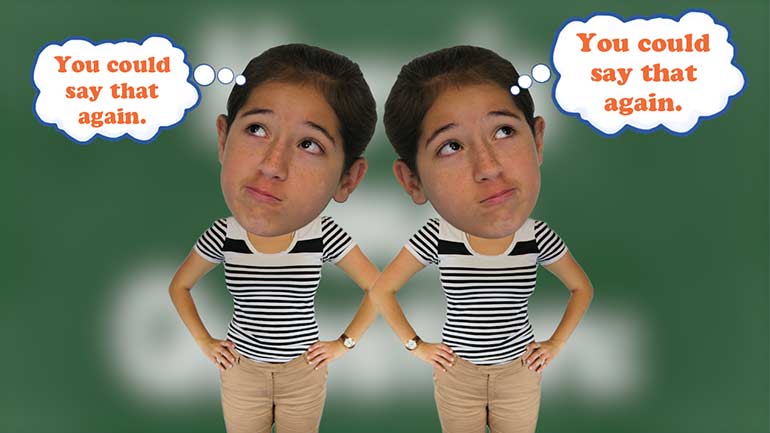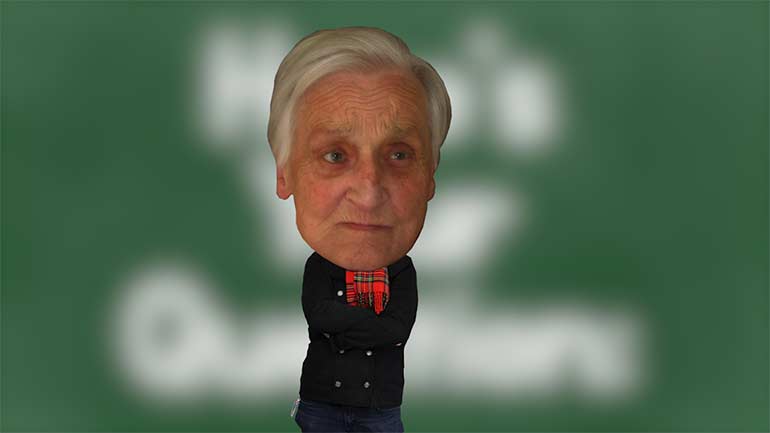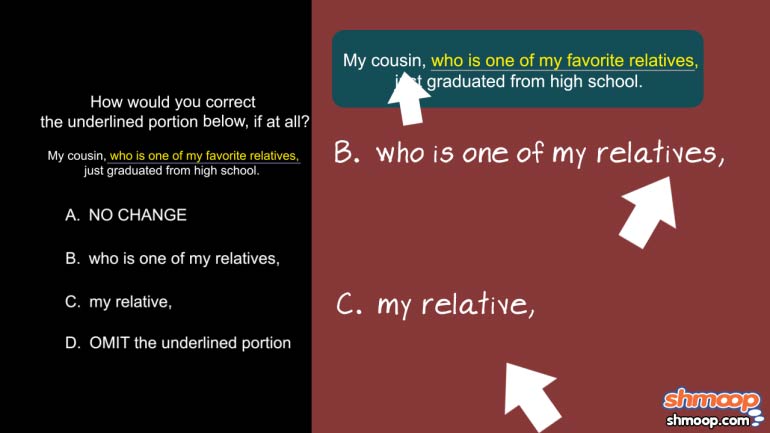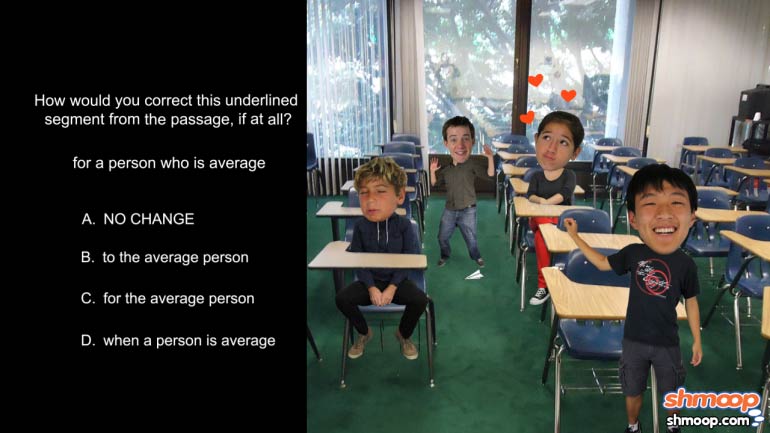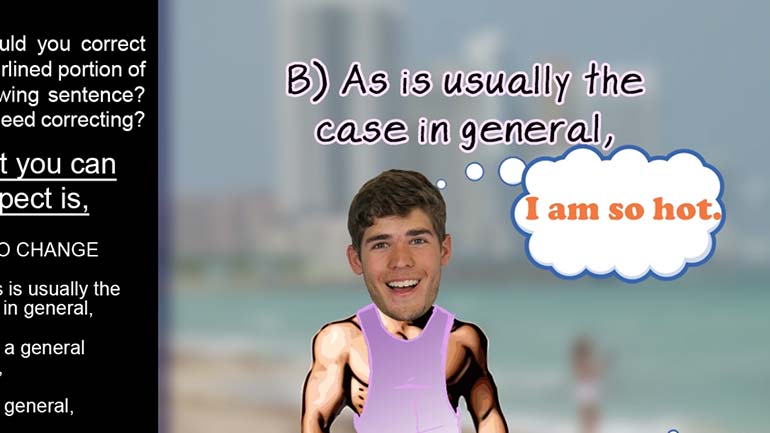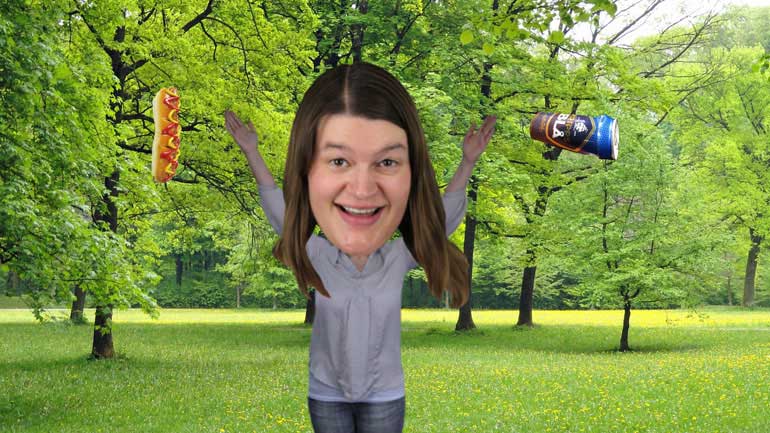ShmoopTube
Where Monty Python meets your 10th grade teacher.
Search Thousands of Shmoop Videos
Rhetorical Skills Videos 50 videos
ACT English: Passage Drill 2, Problem 11. Which of the following sentences would make the most effective transition?
In this ACT English passage drill determine if the writer of the passage may or may not have achieved their proposed goal.
ACT English: Passage Drill Drill 3, Problem 2. What would the paragraph lose if the writer omits the underlined phrase?
ACT English 2.14 Passage Drill 180 Views
Share It!
Description:
In this ACT English drill question, figure out if the underlined section requires a correction or not.
Transcript
- 00:03
Here’s your Shmoop du jour, brought to you by a miniature reenactment of Moby Dick.
- 00:08
Need we say more?
- 00:12
Check out the following passage and answer the question below.
- 00:26
How would you correct the following underlined portion from the passage? Does it need correcting at all?
- 00:39
This one requires us to find the correct introductory phrase for the sentence in question.
Full Transcript
- 00:46
Having the wrong introductory phrase can throw a sentence out of whack.
- 00:52
These types of phrases are supposed to set the stage for the sentence to come,
- 00:56
and if they set the stage in a confusing way, nobody knows what’s going on.
- 01:00
Choice (A) is a good example of an introductory phrase gone wrong.
- 01:04
“Unwilling to accept the truth”
- 01:06
fails because the sentence doesn’t reference any truth that the writer is unwilling to accept.
- 01:11
The author is well aware that the cat hates bathing, but bathes it anyway.
- 01:14
Harsh, but necessary we suppose.
- 01:19
Choice (B) gives us the modifier “sympathizing,” which supposedly describes the way the author
- 01:24
feels as he or she washes the cat despite its protests. Unless the writer is some kind
- 01:29
of sadist, there’s a good chance that he or she does feel bad for the cat.
- 01:32
However, “sympathizing” doesn’t groove with the rest of the sentence. If the writer
- 01:36
were overwhelmed with sympathy, he or she would probably stop bathing the cat. Instead,
- 01:40
the author continues the hated bath. Hm, maybe he or she is a sadist.
- 01:45
Next, we’ll take a look at choice (C), which offers the phrase “feeling cowed.”
- 01:52
In case anybody is wondering, the word “cowed” has nothing to do with our bovine friends--unless
- 01:57
they’re being bullied by the big cow on the block.
- 02:01
When someone has been “cowed,” it means that they’ve been intimidated into submission.
- 02:06
This, of course, doesn’t describe the author’s disposition. The author is making this bath
- 02:10
happen even though the cat is putting up a serious fight.
- 02:13
The correct answer is (D). The phrase “refusing to accept defeat” sets us up to hear the
- 02:19
rest of the sentence, and it functions as a transition from the cat's extreme reaction
- 02:23
to the writer's own fairly drastic action of turning on the shower.
- 02:27
We could think of a few more drastic actions, but the Humane Society would probably disapprove.
Related Videos
ACT English: Punctuation Drill 2, Problem 2. Where should the semi-colon be placed?
ACT English: Punctuation Drill 3, Problem 1. How should this sentence be changed so that it is grammatically correct?
ACT English: Punctuation Drill 3, Problem 2. How should we properly hyphenate the words in this sentence?
ACT English: Punctuation Drill 3, Problem 4. Which choice best formats this list of items?
ACT English: Punctuation Drill 2, Problem 1. Which choice of punctuation best completes the sentence?

